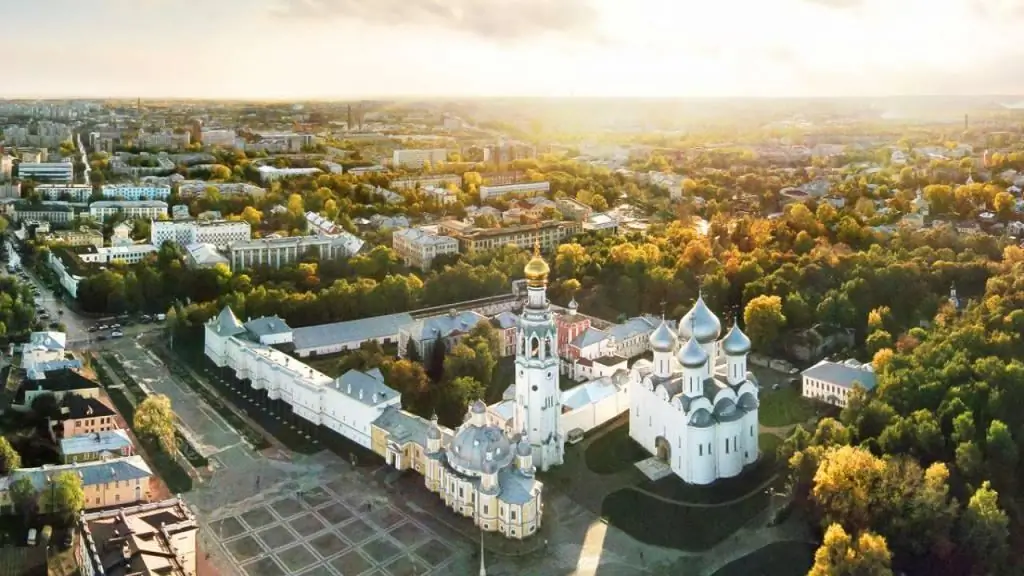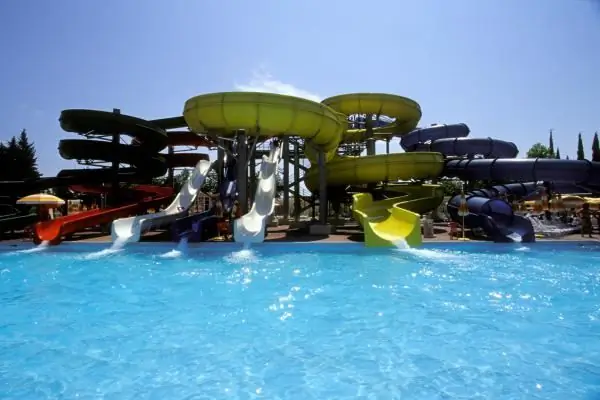- Author Harold Hamphrey [email protected].
- Public 2023-12-17 10:06.
- Last modified 2025-01-24 11:10.
The capital of Bavaria, the birthplace of BMW cars, the largest cultural and industrial center of Germany - all this is about Munich. The metro, despite this, appeared in it relatively recently, in 1971, although it was planned since the beginning of the last century. What are its features and differences from other subways?
A bit of history
In 1905, a project to build an underground railway from the Main Station to the East Station appeared. But due to insufficient passenger traffic, this plan was not implemented. They tried to implement it later, in the twenties and thirties, but first the global economic crisis, and then the Second World War, slowed down the construction of the subway.
Wartime had a devastating effect on Munich. The metro, or rather its tunnel, was used as a bomb shelter. After the Second World War, it served as a place for growing mushrooms.
Due to the lack of financial opportunities, the construction of the subway was not returned for a long time. Only when it was announced that the city would become the venue for the Olympic Games, the construction of the metro began in full force, and on October 19, 1971, it opened its doors to passengers.

General Description
Metro has 100 stations and 8 lines, and its length is 103.1 km. It is one of the most convenient in Europe, as it has elevators, bike racks, travolators, escalators and even defibrillators - special devices to help with cardiac arrest. In addition, mobile communications and the Internet function here.
The subway operates from 4 am to 1 am, and on weekends and holidays - until 2:00. Trains run at intervals of 10-20 minutes, during peak hours this interval is reduced to 5. The maximum speed at which this type of transport can travel is 80 km/h, but the average is 36.7 km/h.
All stations are equipped with boards where you can see the arrival time of the next train. There is also a map of the Munich metro at each stop. Special mobile applications (for example, Google Maps) will help you avoid long waits and calculate the time correctly. You can see when the next train arrives in order to arrive at the specified time.

Munich metro zones
The public transport network is divided into four parts, which are indicated on the map in different colors. Depending on the zone you plan to travel to, the price of subway tickets in Munich will vary.
The first area in German is called Innerraum, which means "Inner Zone". On the map, it is painted white and includes most of the city's attractions: Karlsplatz, Marienplatz, MuseumBMW, English Garden, Nymphenburg, Olympic Park, Main Station and Zoo.
The second zone called Munchen XXL is highlighted in white and green. These include Starnberg, Schleissheim, Poing Wild Animal Park and Dachau.
The third zone in the Munich metro in Russian is called the "Outer Region" and is indicated by green, yellow and red colors. This includes the outer ring of suburbs, excluding the inner city.

Finally, the fourth part includes the "All Network" - white, red, green and yellow zones. It also owns the Munich airport and two lakes - Starnbergersee and Ammersee.
How to buy subway tickets?
First of all, it is worth planning the route and calculating which zones it will pass through, since the amount that will have to be spent on travel directly depends on this (from 2.7 to 10.5 euros).
It should be noted that if you plan to combine several modes of transport in one trip (for example, metro and trolleybus or tram), you do not need to buy a separate ticket for each. Travel documents in the capital of Bavaria are unified and provide for the possibility of transfers during the validity of the ticket. You can buy them at special machines in the Munich metro (in Russian and English), at airport ticket offices and even at hotel receptions.
For one passenger
A one-time ticket for a trip within the first zone costs 2.70 euros and is valid for three hours, starting from the second - for four hours. Alsoyou can purchase a short trip for 1.4 euros, its duration is 60 minutes, and it includes a maximum of 4 stops, of which there can be no more than two on the metro or train.
If you plan several trips within one day, it is better to buy a day card. It will cost 6 euros and will allow you to travel by any transport without restrictions until 6 a.m. the next day. Such cards are also provided for three days, in which case you will need to pay 15 euros.

The most profitable options will be travel cards for a longer time. But keep in mind that for a week they can be purchased only on Monday, and for a month - only in its first days. Children from 6 to 14 years old (with documents confirming family ties) can also be transported on travel cards on weekdays, starting at 9 am, and on weekends.
How to save money with a company
There is a so-called striped ticket, consisting of 10 strips. It depends on the social status, age of passengers and the distance of the trip how many lines need to be torn off. In this case, the face value of one strip is 1.3 euros. For example, to travel within the same zone, a child will need to tear off one line, and an adult - two.
If you plan several trips by public transport with the company during one day, you can buy a day ticket, which is intended for groups of up to 5 people. Its price is 11.2 euros.
Another option - the Bavarian ticket - allows you to travel to all areas of Munich, inits suburbs and some cities of other lands. It costs €22 and can be ridden by up to 5 people (each will cost €4 extra).
Can I travel without a ticket?
There are no turnstiles at the stations, but this does not mean that it will be possible to ride for free. This is vigilantly monitored by controllers who do not care whether the tourist is in front of them, who has not been able to really understand all the intricacies of the transport system, or a local resident. In any case, they will issue a fine of 40 euros.

But do not think that when buying tickets and making itineraries, there must be some difficulties. Although there is no Russian subway map of Munich here, it is possible to find an understandable menu in the vending machines for tourists who do not speak German and English.
There are validators in front of the escalators, with which you need to validate the purchased ticket. After this procedure, it will reflect the date, time and station name. It is this information that the controllers check.
Features of the subway
In places where the subway connects to the city train, there are special points consisting of several cafes, large elevators that can accommodate several prams and wheelchairs, and bicycle parking. You can't smoke here, but you can drink beer (as you can almost anywhere in Germany).
Trains of different branches pass along the same track. To understand which one you need to take, the Munich metro map will help - you can find it at every stop and on the official websitepublic transport of the city. There is it in our article.
Despite the short distances in a city like Munich, the metro includes a lot of stations (and is one of the first places in the world in terms of their number per 1000 inhabitants). Trains move quite slowly and quietly, allowing passengers to talk to each other without straining the vocal cords. Most of the stations are underground, with the exception of one located on a flyover and five built above ground.

Interesting facts
In 1972, the city hosted the Olympic Games, and in 1980 the Pope came to Munich. The Nuremberg metro borrowed several trains for this purpose, as their designs were similar. There was also an opposite exchange - in 1978 for the Nuremberg Christmas market. Currently, such an operation is technically impossible, as train designs in these cities have changed.
Munich subway reviews
Most passengers note the convenience of this type of transport: they praise the presence of bicycle parking, elevators, electronic scoreboards, route maps at each station, the coincidence of the name of the stations with the city ground train.
Foreign tourists are not very happy with the complex system of buying tickets, because of which it is not always possible to understand which one should be chosen in this or that case. It takes time, which is often limited, to figure it out.

Minus and at a fairly high costtravel - especially for those who travel alone. But in general, the ticket price does not exceed the average cost in Europe.
Despite its shortcomings, the metro in this city is one of the fastest and most convenient modes of transport, allowing you to comfortably get to almost anywhere in Munich.






